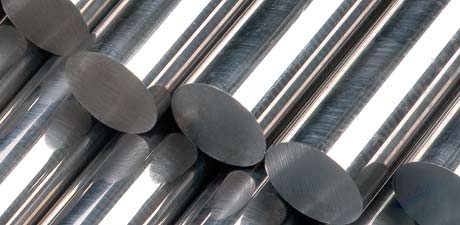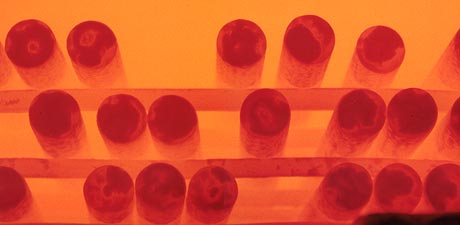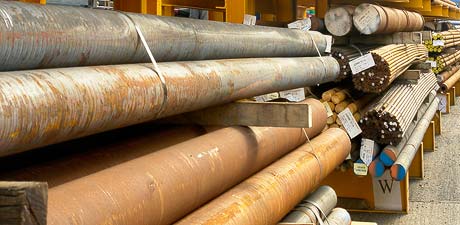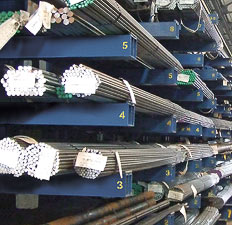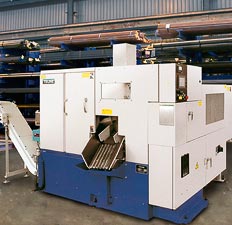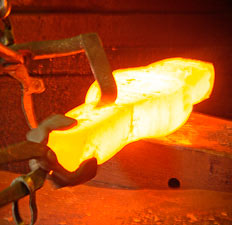Technical Data
Metallurgical Terms
Alumina. (AI2O3).
The oxidation product of aluminium; as such may be a constituent of non-metallic inclusions. Alumina is also used as a refractory (alumino-silicates are the principal constituents of fireclay refractories) and as an abrasive (corundum and emery).
Annealing.
Heating steel and holding it at a suitable temperature followed by cooling at a suitable rate, with the object of improving softness, machinability, and cold-working properties or of removing stresses and obtaining a desired structure. Usually (full annealing) the steel is heated to a temperature at which the carbide is wholly or partly taken into solution; subsequently the steel is slowly cooled, generally in the furnace. Sub-critical annealing is done at a temperature just below that at which carbide commences to be taken into solution.
Anodizing.
A process of coating aluminium or aluminium alloys with a layer consisting essentially of aluminium oxide. The aluminium is made the anode in an electrolytic cell containing dilute chromic, sulphuric or oxalic acid. The cathode may consist of lead, iron or carbon according to the electrolyte used. Oxygen is generated at the anode and attacks the aluminium, giving rise to a tenacious corrosion-resistant film. The film is somewhat porous and it is usually ‘sealed’ by means of lanoline dissolved in spirit. If desired, the anodized surface can be coloured with various dyes before sealing.
Arc Furnace.
A steel melting furnace that normally has three electrodes, one phase of a three-phase current being brought to each electrode. In plan, the electrodes are situated at the apex of an equilateral triangle. The current travels from electrode to electrode through the medium of arcs made with the bath. The electrodes used in this furnace may be either graphite or amorphous carbon. Graphite electrodes have approximately four times the conductivity of amorphous carbon and thus an electrode only half the diameter will carry the same current. The basic process, in which the hearth is of rammed magnesite or dolomite, may be used for the production of blooms, billets, ingots or castings, while the acid process, in which the furnace lining consists of silica sand or ganister over silica brick, is employed principally for the production of castings.
Armco Iron.
A nearly pure commercial iron, manufactured by the American Rolling Mill Co., containing less than 0.1% impurities, e.g., carbon 0.012%, manganese 0.017%. phosphorus 0.005%, sulphur 0.025%.
As.
Chemical symbol for arsenic.
Au.
Chemical symbol for gold.
Ausforming.
A hardening process in which the steel is first austenitized, cooled to a temperature in the region of 400°C, where it is heavily worked and then quenched to martensite. The result is very high strength combined with good ductility.
Austempering.
An interrupted quenching process which consists essentially of heating steel to an appropriate temperature above the critical range to render it austenitic and then, instead of cooling to room temperature in one of the conventional cooling media, transferring the steel to a hot quenching bath maintained at a predetermined, constant temperature below the critical range, but above the martensitic change point (Ms point) usually between 260°and 370°C; the steel is held at this temperature for a certain time to ensure the complete direct transformation of the austenite in the final products (e.g., pearlite and/or bainite), after which the material may be cooled to atmospheric temperature in any convenient manner. (See also Critical Cooling Rate).
Austenitic.
A solid solution of one or more alloying elements in a face centred cubic polymorph of gamma iron. Specifically, in carbon steels, the interstitial solid solution of carbon in gamma iron. (See also Allotropy, Austenitic Steels and Gamma Iron).
Austenitic Steels.
Steels consisting of austenite, which, owing to the presence of high percentages of certain alloying elements such as manganese and nickel, are stable, for most practical purposes, at normal temperatures. Typical examples of austenitic steels include 14% manganese steel, and the corrosion-resistant type containing about 18% chromium and 8% nickel.
Austenitizing.
Heating steel so that it becomes completely austenitic. This is usually the first stage in a heat treatment operation such as hardening, normalizing, full annealing, etc.
- < Previous
- 1
- 2


